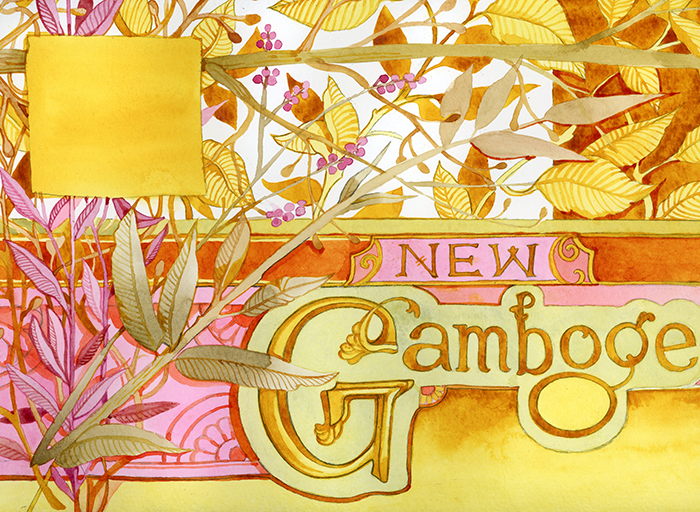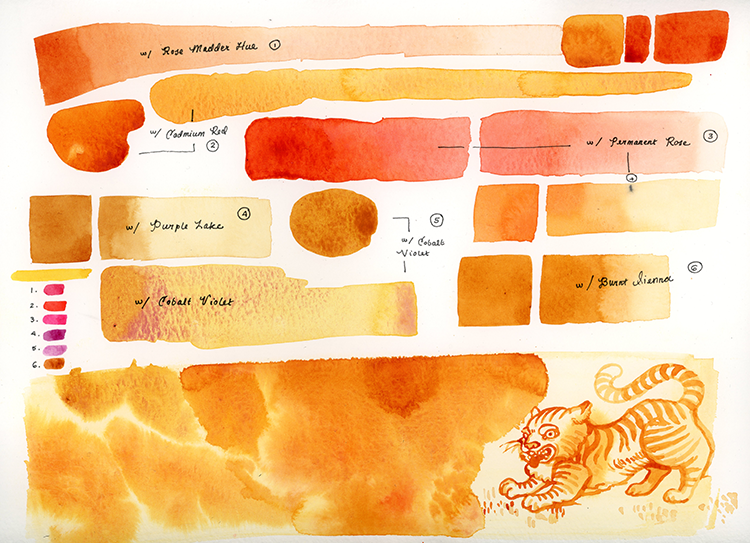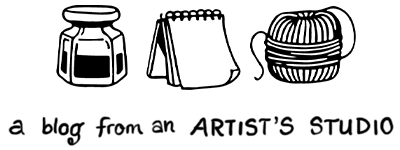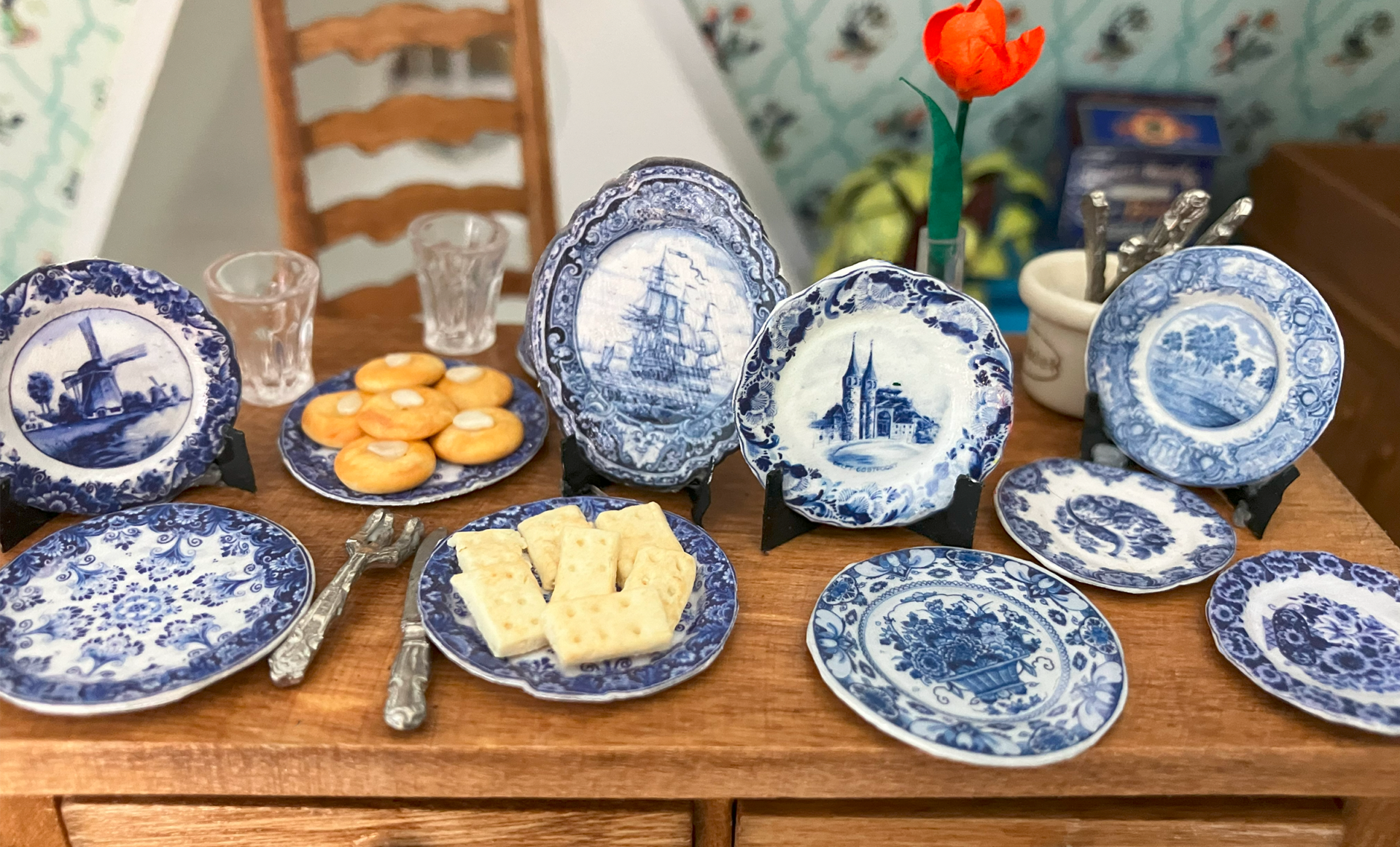
Recently, frustrations with watercolor have lead to practicing, and I used the excuse to create a little illustration centered around the newest tube of paint in my watercolor collection: gamboge yellow.
Gamboge is fun because what you see with it is not what you get, and the contrast is kind of magical. In the pan, gamboge looks like burnt toffee (or, I’ve heard earwax). It’s dark and neutral, more like a Burnt Sienna than a Lemon Yellow. But when you touch it to the page, it blooms into a striking saffron yellow that’s almost fluorescent until it dries!
Experimenting with mixing my red/purples and my blue/greens, gamboge resulted in some of the most vivid, juicy oranges and intense, interesting greens:


Afterwards, I couldn’t help dipping back into one of my favorite art books, The Secret Lives of Color by Kassia St Clair, for some details on the story behind the pigment.
Physically, gamboge is a resin, drawn from deep within the trunks of the Garcinia tree native to Cambodia. A length of hollow bamboo is used to tap trees at least ten years old, and the resin solidifies within. When removed, the hard, dark brown cylinders, dissolve out to a brilliant, saffron-yellow color.
Gamboge has been used in China and Japan since this 8th centuries, and arrived in Europe by 1615 when it was imported by the East India company. It enjoyed immediate popularity and was used by such painters as Rembrandt. Gamboge is evident in his paintings that feature glowing, golden haloes of light. If you had stumbled upon gamboge in the apothecary, however, it may have also been advertised as a purgative. Gamboge is slightly poisonous, and ingestion causes impressive diarrhea that was thought at the time to be curative.
Incidentally, that is also why my gamboge is “new” gamboge. A synthetic pigment, New Gamboge is specially formulated not to give you gastric issues if you accidentally swig your rinse cup!

